On the stilts of the Fiavé Archaeological Nature Park
In the natural setting of the Fiavé-Carera reserve, between Lake Garda and the Dolomites
Can you imagine that once upon a time, in this place where today the grass covers the bog, there was a large body of water? We are talking about the ancient Lake Carera. A Bronze Age village built on stilts stood right here, in the second millennium BC.
Would you like to see what it was like and what life was like back then? Follow us on this adventure and explore with us the Fiavé Archaeological Nature Park, which is located in an area of great historical and naturalistic interest and a UNESCO heritage site: the Fiavé-Carera nature reserve, in the Giudicarie Valleys, between Lake Garda and the Brenta Dolomites.
What can we find at the Archeo Nature Park?
The Park allows full immersion in the daily life of men and women of the Bronze Age, along a path divided into 3 stages: the first is the archaeological site of the Fiavé stilts, included in the UNESCO World Heritage List in 2011; the second is the spectacular village on stilts, where you can feel with your hand how life was in prehistoric times; the third stage is the Pile Dwelling Museum in Fiavé, where you can learn what you saw more in depth.
These sites are nestled in a location of great naturalistic importance: the Fiavé-Carera Nature Reserve.
Follow us on this journey through history, or rather, into prehistory!
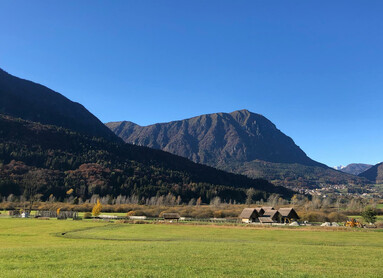
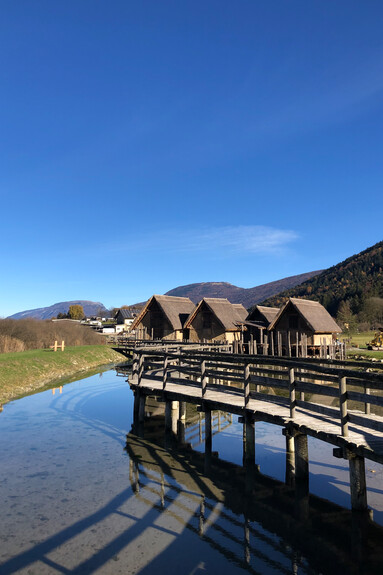
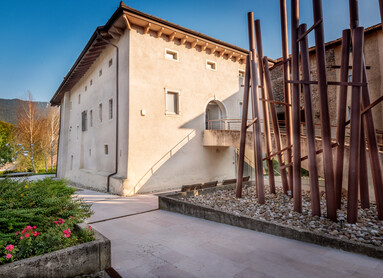

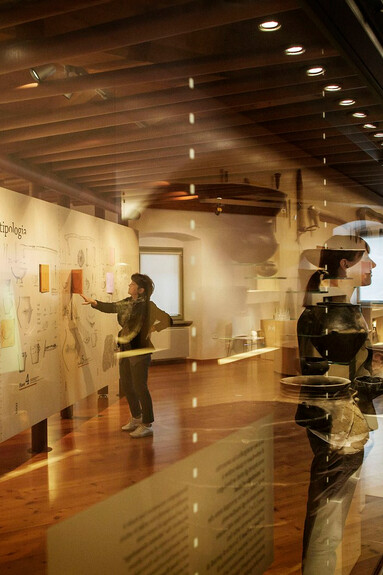
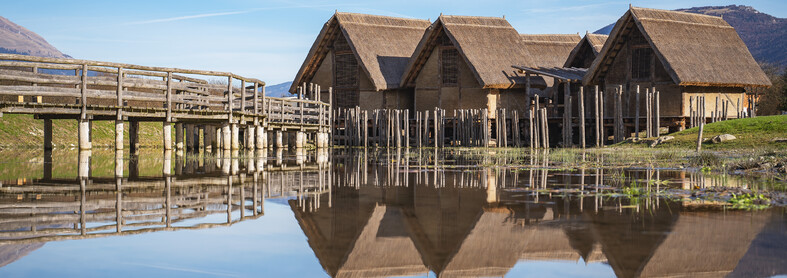
1# The archaeological site
Your journey into prehistory starts with its most ancient witnesses, which have steadfastly withstood the passing of time over the centuries. In other words, you start with the archaeological site of the Fiavé stilts, included in the UNESCO World Heritage List in 2011.
Here, you can find what is left of the thick “forest of stilts” that supported the village on stilts millennia ago, and which are now submerged. It is an amazing finding that has come down to us intact!
This archaeological site is considered a reference point for the study of prehistoric communities, also thanks to the many artifacts that are still in an excellent state of conservation. You can admire them in the Pile Dwelling Museum in Fiavé, and we will make a stop there a little later.
Now stop for a moment in front of the tips of these ancient stilts and try to imagine how life could have been in the village, thousands and thousands of years ago.
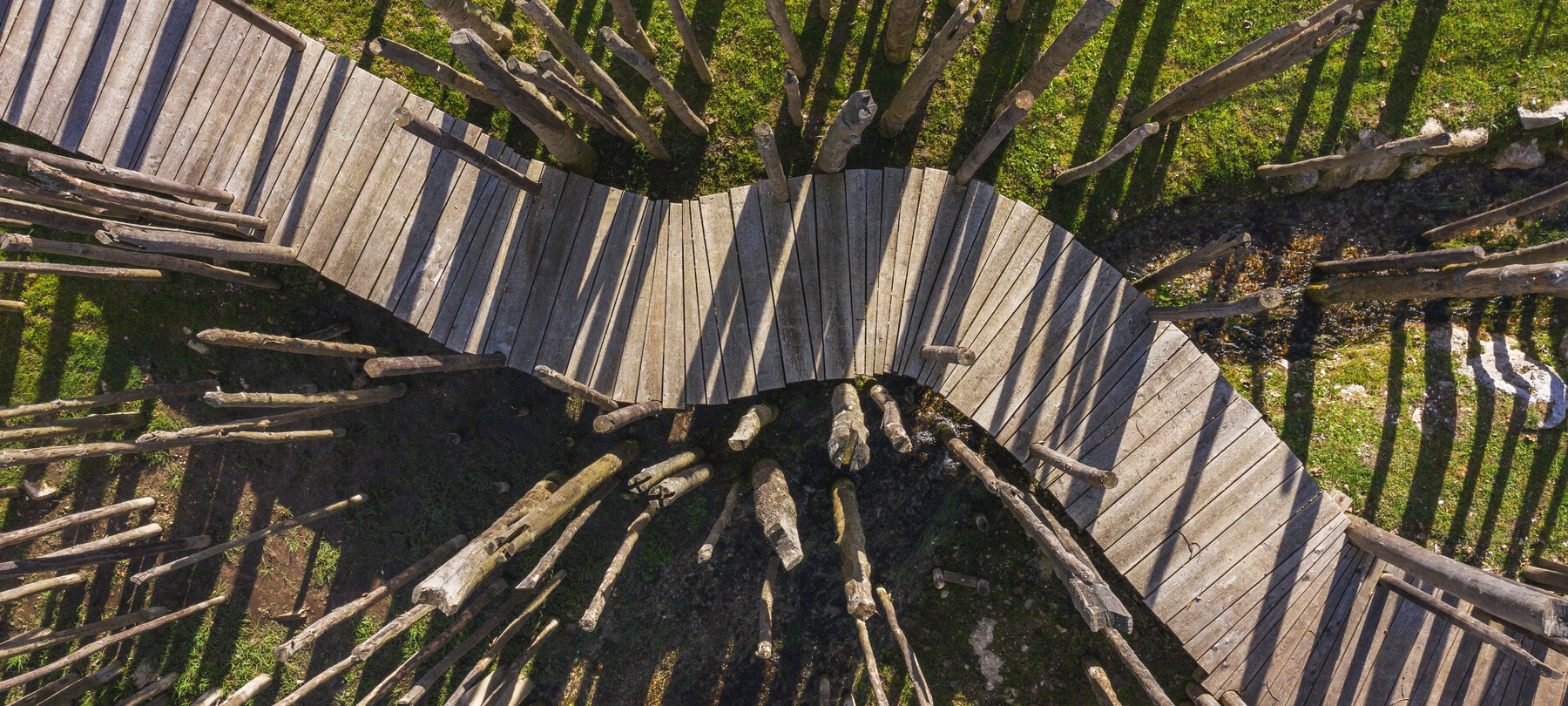
#2 Pile dwelling village and workshops
After imagining how life was in prehistoric times, you are ready to take a step further, delving directly into prehistory. To this end, from 2021, some of the houses on stilts that once constituted the ancient Bronze Age village have been rebuilt a stone’s throw from the archaeological park.
A walkway suspended over the water accompanies you through wooden huts, complete with work tools, utensils and rudimentary furnishing elements, reconstructed on the basis of scientific data, documented in research conducted by archaeologists from 1969 to the 1990s.
Many illustrative panels enhance your walk, but our advice is to explore the park with a guided tour and to try your hand at the different themed workshops, which help the little ones (and other visitors) to understand how wood was processed, ceramics were produced and the days were spent in this ancient community.
The best way to touch history, or rather... prehistory.
Download the park map!
FIND IT HERE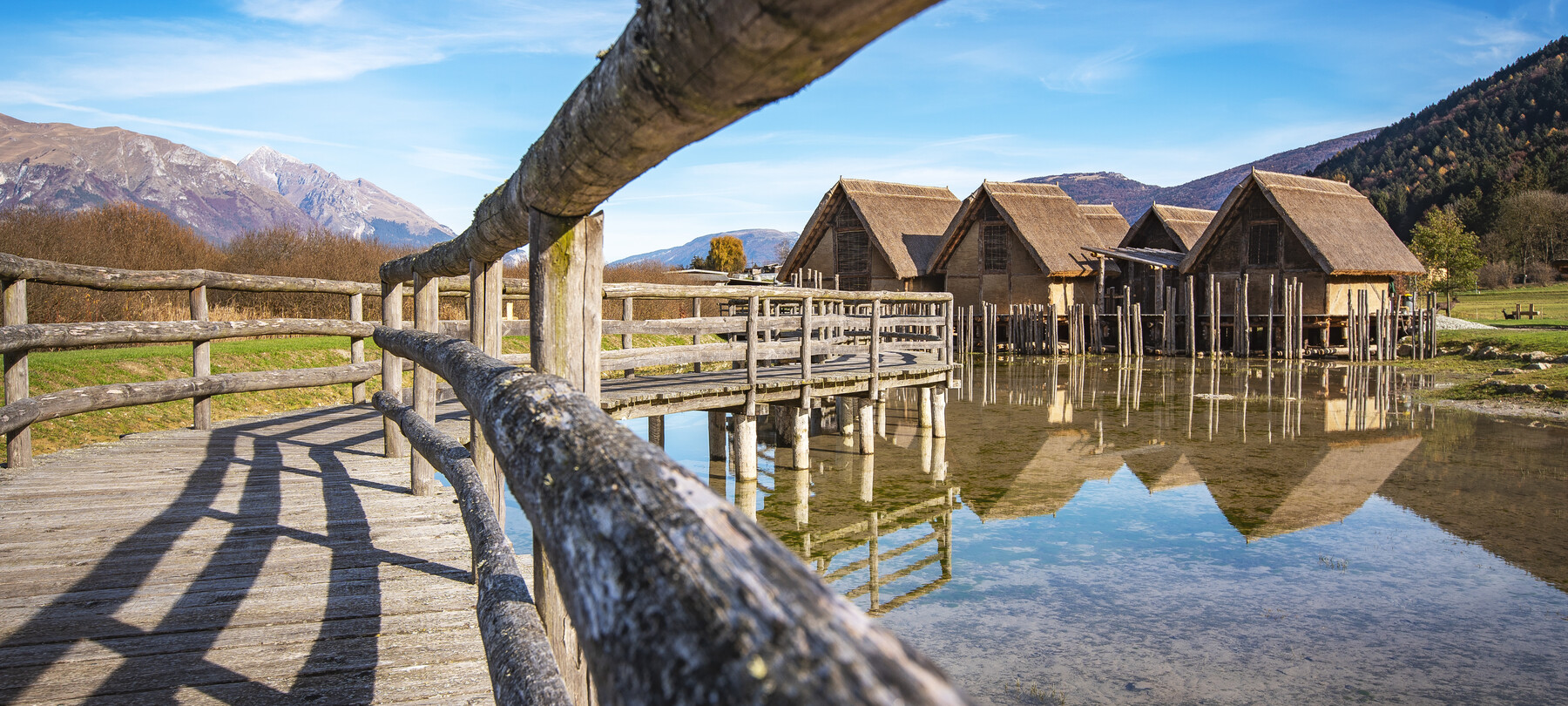
3# The Pile Dwelling Museum
To reach the last stage of this journey into the past, you just need a walk of about twenty minutes, up to the village of Fiavé. There, you will find an old rural construction that houses the Pile Dwelling Museum, showcasing artifacts dating back up to four thousand years ago, many of which are in a surprising state of conservation.
The exhibition includes ceramic pottery, bronze, Baltic amber and gold jewelry. You will also see remains of food from the time and about 300 wooden objects among the best preserved in the world such as cups, ladles, sickles, drills and ax handles. Do not miss the large model with over 70 characters, which depicts common construction techniques and the daily life of our ancestors.

Info
OPENING HOURS
- From 20 June to 31 July: every day, 10 am - 6 pm
- August: every day, 10 am - 7 pm
- September: every day, 10 am - 6 pm
- From 1 to 23 October: Saturdays, Sundays, Mondays and holidays, 1 pm - 6 pm
Access is permitted in compliance with the rules established to ensure the safety of personnel and visitors, who are required to wear a face mask and follow social distancing provisions.
WORKSHOPS
Educational activities and workshops for schools and groups (minimum 15 people) by reservation.
Info: uff.beniarcheologici@provincia.tn.it - tel. +39 0461 492161
TICKETS
- Admission (including admission to the Pile Dwelling Museum of Fiavé): 7 Euro; reduced 5 Euro; free admission for visitors up to 14 years of age and for groups and groups of students accompanied by their teacher; the Museum participates in the Museum Pass and Trentino Guest Card programmes
- Educational workshop: 5 Euro
- Guided tour: 3 Euro
Special rates for families, workshop activities and guided tours for groups (minimum 15 people):
- Workshop: 5 Euro for the first ticket, 3 Euro from the second ticket
- Schools: free admission, 2 Euro fee for educational activities
The reduced admission fee (5 Euro) applies to:
- young visitors, 15 to 26 years of age
- visitors who are 65 years of age, or older
- groups of visitors made up of at least 15 paying people
- members or holders of cards of organisations affiliated with the museum
Reduced 3.5 Euro admission for residents of the Municipality of Fiavé and the Municipalities of the Outer Giudicarie: Comano Terme, Bleggio Superiore, San Lorenzo Dorsino and Stenico
POS service is currently available
PARKING
The parking areas are located at Dos Gustinaci and in the town of Fiavé, as shown on the parking map. Parking at the entrance of the Archaeological Nature Park and in the garden of the Pile Dwelling Museum is permitted only to visitors with reduced physical mobility, and upon notification to the Ticket office staff by telephone (Park: 331 1739336 - Museum: 0465 735019).

Archaeological Park "Archeo Natura"
more

